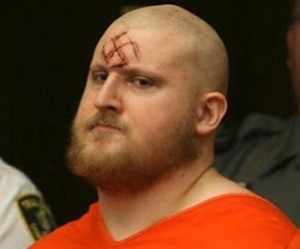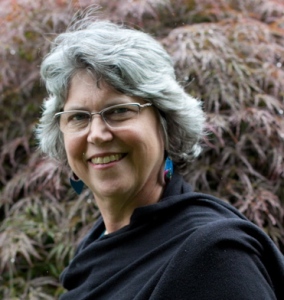
More Americans have been killed in the US by white male citizens, often white supremacists, than by any other domestic or foreign group.1 Well-armed with guns and hatred of Jews, Blacks and Muslims, these white Americans fight to regain a white and “christian”2 nation.
It is accurate to say that our country was founded on white, male, wealthy, “christian” supremacy. While that foundation still has a strong foothold on almost every aspect of our culture, it is predicted that by mid-century, white skinned people will be in the minority in the US.
I can’t pretend that I am totally separate from these white extremists. They have lit their torches illuminating the fact that our country has long been dominated by whiteness and anti-Semitism. This same system has opened doors for me all my life, as it did for my ancestors. The natural consequence of generation after generation of exclusion has erupted today as hatred directed at non-white and non-Christian people.
My grandfather was an attorney who believed in justice. Yet, in a letter to his fiancé (my grandmother) written in 1923, he spoke about one of the best speeches he’d ever heard: “This Col. Simmons of the KKK made a talk [at the Texas Capitol] to 20,000 people. He has a wonderful personality and is a good speaker. I wonder if you have joined the Klan? Or the Order of Camelia, I should have said.” Years later, my grandfather publically supported the first black female attorney’s nomination to the Wichita Falls, TX bar association. And I loved him.3
In Big Topics at Midnight, I wrote a chapter titled “Did My People Survive Slavery?” After listening to a Sweet Honey in the Rock’s song “I Remember, I Believe,” where black women asked that questions about their own ancestors, it struck me that the same query applied to my ancestors, and I asked myself: What was the moral legacy of families like mine who owned slaves and were moved by a KKK speech?
Unfortunately, we are living that legacy now.
This legacy came through families like mine and through the larger cultural family of Euro-Americans. Unnoticed without confession or repentance, the moral flaws of yesterday erupt now in the growing movement of white supremacists, our nation’s homegrown terrorists. A terrorist is defined as “a person who uses unlawful violence and intimidation, especially against civilians, in the pursuit of political aims.” Our focus on foreign terrorists is merely a distraction to the real terrorists within.
The signs of this ingrained white supremacy is fully visible for anyone who cares to notice. Can you imagine if the August 11 march on the University of Virginia campus—complete with lit torches, armed men and hateful rhetoric targeted at specific groups—had been as assembly of black skinned rather than white skinned men? Or Jewish? Or Muslim? Can you imagine the uproar if President Obama, a black skinned man, had spoken and acted as disrespectfully as white skinned President Trump has consistently done? Can you imagine what the law enforcement response would have been if the armed men who took over the Malheur Wildlife Refuge in Oregon had been black skinned? Or Jewish? Or Muslim?
Our national law enforcement and public sentiment response would NOT have been the same.
I’ve spent years unmasking the tendrils of white supremacy that have been part of my nation and my family and my life. Denying that, or white-washing it as merely a historical problem or an isolated issue of extremists, is to personally participate in the movement for white supremacy.
The cry of my heart is directed at others like me—white skinned and Christian. The legacy of racism, patriarchy and religious intolerance that was one part of our nation’s founding is threatening to destroy us all. While we are not responsible for actions of our ancestors, we are living in the toxic legacy of the moral disconnect between values and actions that worked their way into our institutions and systems. We—you and me—are fully responsible for how we live today.
Being quiet and disconnected is no longer an option.
My prayer is that our nation is going through the last gasp of what has been and is still a dangerous and hateful legacy. For that to be true, however, all of us need to step up and embody justice for all. Each in our unique way.
The steps forward to constructive change are ancient and outlined in many of our faith traditions: open your eyes and heart to see; confess where you as an individual and where you as part of the national collective have participated in injustice and inequity; repent—a transformative change of heart; and then take action that flows from your new, wide-open heart.
Our nation’s racism and anti-Semitism runs deep. The call of my heart to our beloved nation is to wake up and repent, remembering these self-evident truths: that all are created equal; that all are endowed by their Creator with certain unalienable rights; that among these are life, liberty, and the pursuit of a union with the good spirit (named as “happiness”).
1 Article with links to more primary sources
2 A side note: I can’t help putting christian (with a little c) in quotes. There is no relationship between the heart of Christianity and white supremacy’s christianity. Unfortunately, far too much of CHRISTIANITY as a institutional church has become infected by the sin of white supremacy and anti-Semitism. Likewise, it is also true that white-skinned people and male people have too often been culturally infected by a sense of power-over superiority inherent in racism and patriarchy (among other things), and perhaps should also be noted with quotation marks. This cultural sin has a wide and deep legacy.
3 Individuals (such as my grandfather) like nations are complex and paradoxical, full of wisdom and generosity and prejudice and hatred. I am hopeful that seeing our own shadow will give us greater compassion as we support each other on the journey back to the just and equitable essence that is our birth right. We need each other as we unhook from the toxic parts of our national legacy.

